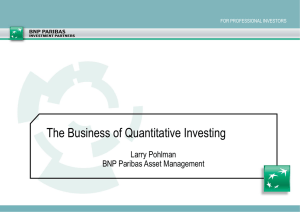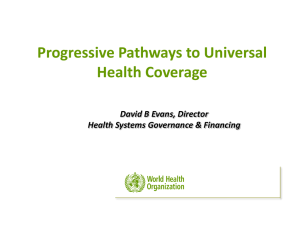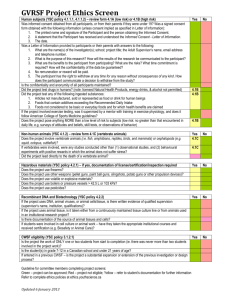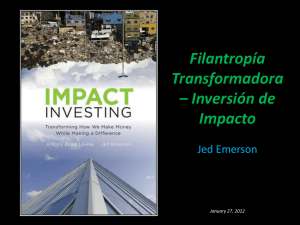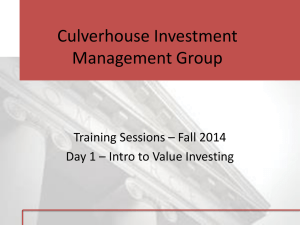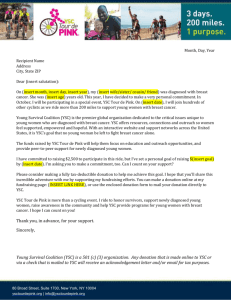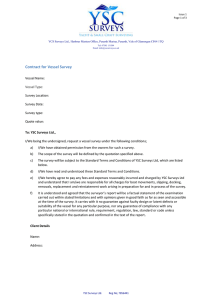S2_2 - Art Durnev
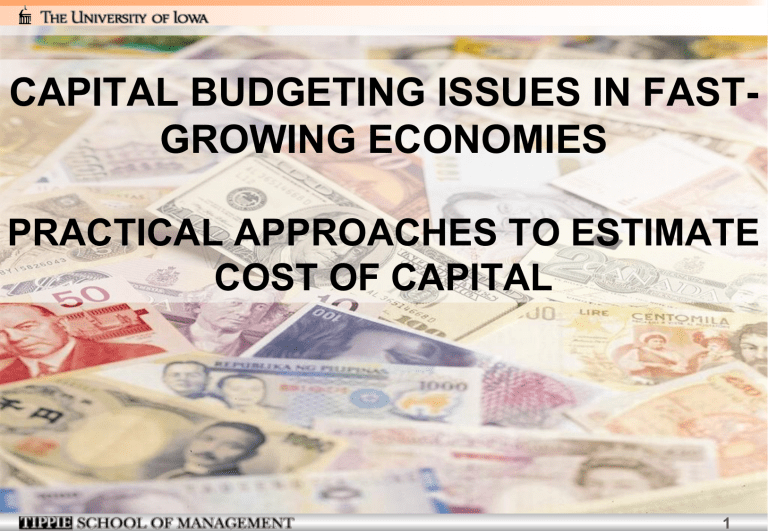
CAPITAL BUDGETING ISSUES IN FAST-
GROWING ECONOMIES
PRACTICAL APPROACHES TO ESTIMATE
COST OF CAPITAL
1
Cost of Equity, Flexible Approach
General Model where R f denotes risk-free rate, MRP the world market risk premium,
SR specific risk of the investment, and A some additional adjustment .
Four Different Models
two inputs ( R f and by all four models
MRP ) on the basis of worldwide markets are shared
two other inputs SR and A differ across the models
1.
The Lessard Approach
2.
The Godfrey-Espinosa Approach
3.
The Goldman Sachs Approach
4.
The SalomonSmithBarney Approach
2
The Lessard Approach
measures specific risk ( SR ) as the product of a project beta ( β p
) and a country beta ( β c
):
SR where β p and β c capture the risk of industry and country, respectively.
cost of equity when investing in industry p and country c is:
β p
( β c
) is estimated as the beta of the industry (country) with respect to the world market, and no further adjustment ( A is assumed to be zero)
3
The Godfrey-Espinosa Approach
Two adjustments with respect to CAPM:
1)
Adjusting R f by the yield spread of a country relative to the U.S. ( YS c
)
A = YS c
2)
Measuring risk as 60% of the volatility of local market relative to world market
( σ c
/ σ w
)
SR = (0.60)· ( σ c
/ σ
W
) where σ c and σ w are the standard deviation of returns of stock market of country c and world, respectively.
● cost of equity when investing in industry p and country c is:
● this model ignores the specific nature of the project, but all that matters is the country in which the foreign company invests
4
The Goldman Sachs Approach
● one adjustments with respect to Godfrey-Espinosa Approach :
●
●
● replacing 0.60 by one minus the observed correlation between the stock market and bond market of the country c .
SR = (1–
SB
)
· ( σ c
/ σ
W
) where
SB is the correlation between stock and bond markets .
● cost of equity when investing in country c is:
● intuition of the model
SB
= 0 no correlation, two sources of risk (stock and bond)
SB
= 1 YS c captures all relevant risk
0<
SB
<1 the model incorporates both risk from bond and stock markets, but not double counting sources of risk
5
The SalomonSmithBarney Approach
account for the risk of investing in Specific Industry and/or Country
adjustments with respect to previous models :
1)
2)
3)
Political risk (
1
: between 0 and 10)
Risk of accessing capital markets (
2
: between 0 and 10)
Financial importance of the project (
3
: between 0 and 10)
A = { (
1+
2+
3
) / 30}·
YS c
intuition of the model
1 is a rough estimate of the likelihood of expropriation (e.g., oil industry)
2 is low for large firms and high for small undiversified firms
3 is low for large firms investing in relatively small projects and high for small firms investing in relatively large projects
6
The SalomonSmithBarney Approach – continued
intuition of the model
worst scenario A = YS c
; the best case A = 0
For example, a large international firm investing a small proportion of its capital in an industry unlikely to be expropriated ( A = 0)
A small undiversified company investing a large proportion of its capital in an industry likely to be expropriated would have to incorporate a full adjustment for political risk ( A = YS c
)
quantify SR (specific risk) with the project beta, then the cost of equity when investing in industry p and country c is:
this model, different from three previous ones, can allow discount rate to depend on not only specific project but also the company
7
